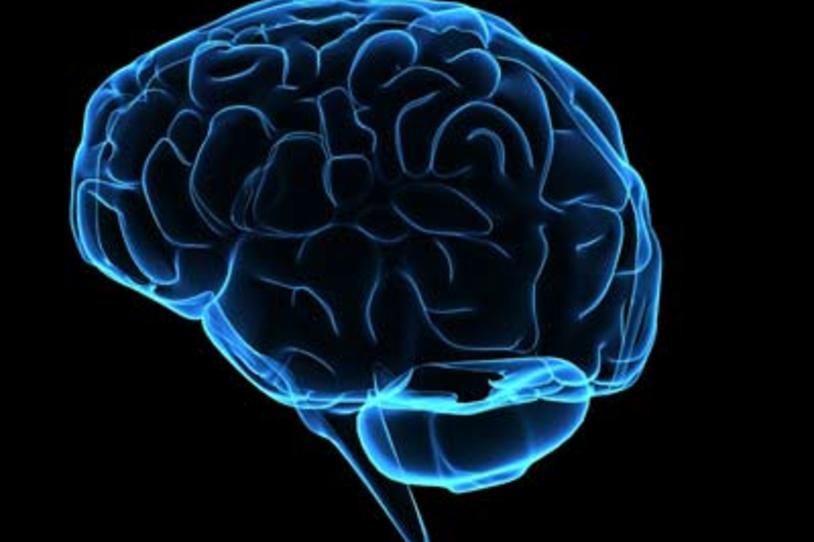
Brain cells talk to each other using chemicals and electricity. Through this “discussion,” the brain directs how we think, feel, move and more. Changes in chemicals and electrical activity, caused by diseases like Parkinson’s, can impact these everyday activities. In Parkinson’s disease (PD), the brain chemical dopamine decreases. At the same time, electrical signals fail to work properly. These changes lead to tremor, slowness, cognitive changes, depression and other symptoms.
There are many treatments available for Parkinson’s symptoms, including medication, surgery, and others. Many PD medications temporarily boost dopamine or impact other brain chemicals. (Read about currently available drugs.) Surgical procedures, like deep brain stimulation (DBS), use electricity to ease symptoms. Scientists are studying other ways to stimulate the brain, without surgery — known as non-invasive brain stimulation (NIBS) — to treat Parkinson’s symptoms. Here, learn more about brain stimulation, ongoing research, and potential future uses in PD.
What is brain stimulation?
Brain stimulation modifies the brain’s electrical activity to treat symptoms. There are two main categories of brain stimulation: invasive and non-invasive. Invasive brain stimulation for Parkinson’s is deep brain stimulation. It’s called invasive because it involves brain surgery to implant wires into brain areas affected by PD. These wires transmit small electrical signals to decrease motor symptoms. How, exactly, DBS works is not fully known. DBS is approved by the U.S. Food and Drug Administration (FDA) to treat certain symptoms in some people with PD. (Read more about DBS.)
What is non-invasive brain stimulation?
Like DBS, non-invasive brain stimulation modifies the electricity of specific brain areas. But it does not require surgery. It uses tools that work outside the brain. Because of how it’s applied outside the brain, it doesn’t get as “deep” into the brain as DBS does.
How NIBS works is not completely understood. But experts believe it might help “rewire” brain areas that aren’t working properly or activate other brain areas that can compensate. Types of NIBS include transcranial magnetic stimulation (TMS) and transcranial direct current stimulation (tDCS). TMS is FDA-cleared for medication-resistant depression, obsessive compulsive disorder and smoking cessation. Neither TMS or tDCS is yet approved for Parkinson’s, but research in this area is active and promising.
What is transcranial magnetic stimulation?
Transcranial magnetic stimulation emits small magnetic pulses, similar in strength to an MRI, to affect the electrical activity of specific parts of the brain. These pulses are provided by a small coil, placed over one part of the head for a short period, typically 20 to 40 minutes. The device is placed in different locations depending on which symptoms it aims to treat.
For most, TMS is painless. Some feel dull tapping or face or head muscle contractions. Others experience tingling, headache or other side effects.
What is transcranial direct current stimulation?
Transcranial direct current stimulation applies small electrical currents to the brain. It does this through devices, called electrodes, that are placed on the scalp over brain areas of interest. These electrodes conduct electricity that flows into the brain. A session usually lasts 20 to 30 minutes.
During tDCS, many people describe tingling, itching, warmth or other sensations near the electrodes. Some don’t feel anything at all.
Is non-invasive brain stimulation safe?
While non-invasive brain stimulation appears generally safe and well-tolerated, it’s not safe for use in some people, including those who have metal, like DBS, in or near the head. It’s also not safe for people who have other implanted medical devices; who live with certain conditions, such as seizures; or who take certain medications.
What does the research say?
Scientists are studying NIBS to treat various motor and non-motor symptoms of Parkinson’s — especially those that don’t respond fully to currently available treatments. These include walking problems and freezing of gait, cognitive changes, depression, involuntary movement (dyskinesia), and others. The Michael J. Fox Foundation has funded several studies on non-invasive brain stimulation for PD. (Find a list below.)
In general, research results have been mixed. Some studies show benefit and others don’t. When there is benefit, it’s typically small and may not last long. One challenge in interpreting results is that studies use varied protocols. Each trial might test a different strength in a different part of the brain. The number and length of each session can vary, too. This makes it hard to compare or combine results.
Scientists are working to answer questions about non-invasive brain stimulation for PD, including:
- What is the best protocol?
- Which symptoms might respond best?
- Who is the best candidate with regard to symptoms, stage of disease, and more?
- Is this therapy best combined with other treatments, such as physical or speech therapy, for maximum benefit? (Most experts believe non-invasive brain stimulation is an add-on to medications and other PD treatments, not a replacement for them.)
- What are the long-term benefits and risks? It’s unclear if and how long benefits last beyond treatment sessions.
What’s the bottom line?
Non-invasive brain stimulation for Parkinson’s appears generally safe and well-tolerated. Its benefits are not yet fully known. But much ongoing research shows potential for use of NIBS as a treatment tool in Parkinson’s.
Some clinics offer these investigational therapies for Parkinson’s, outside of clinical trials and for a fee. (Insurance does not cover because it’s not FDA approved for PD.)
If you’re considering this treatment, speak with your Parkinson’s doctor and check the provider’s experience, credentials and scientific publications. Make sure you understand what to expect in terms of symptom improvement, side effects, length of treatment, and more.
Learn more about MJFF-funded work on non-invasive brain stimulation for Parkinson’s:
- TMS for mood and motor symptoms
- TMS for dyskinesia
- tDCS for motor symptoms
- tDCS for freezing of gait
- tDCS for walking problems
Visit foxtrialfinder.org and clinicaltrials.gov to find ongoing studies.
Thank you to Mar Cortes, MD, Assistant Professor and Co-Director, Abilities Research Center at Mount Sinai Icahn School of Medicine in New York, New York, for sharing her expertise and reviewing this article.
